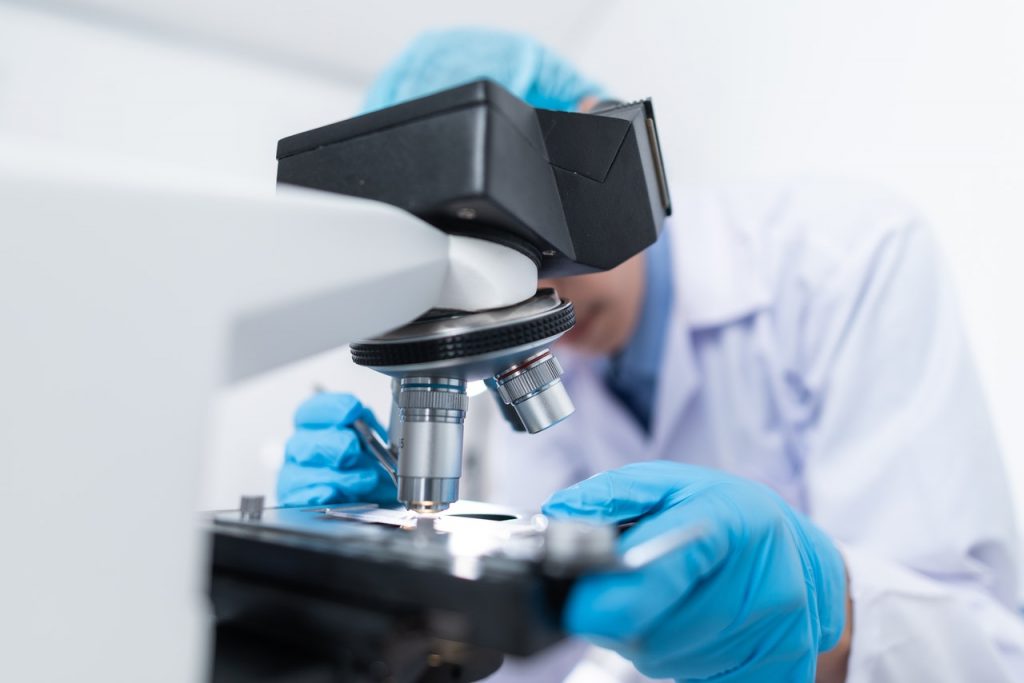



Technology
Plastomics is developing a better way to make biotech crops through placing traits into the plant’s chloroplasts, rather than its nucleus. Chloroplast engineering is better because there are many chloroplasts in a cell, the traits can be precisely introduced, and the chloroplasts are then maternally inherited only through the seed. These biological characteristics of the chloroplast translate into crop products that are better for our planet and more profitable for seed companies and growers.
Plastomics’ chloroplast engineering technology provides the following benefits:
- MULTIPLE TRAITS MADE EASY. The chloroplast has its own single chromosome that readily takes up large pieces of DNA with stacked traits, offering another location to add traits to crops. Stacking traits gives farmers more tools to address the challenges facing the agriculture industry today, such as insect and weed resistance and the need for increased yields.
- MORE POWERFUL TRAITS. Because there are hundreds of chloroplasts per cell, and only one nucleus, trait expression in the chloroplast is significantly greater and more powerful, resulting in fewer surviving pests to develop resistance. In addition, because the chloroplast does not deactivate (silence) foreign DNA as does the nucleus, there is no risk of this type of trait failure in late-stage breeding or, worse, in a commercial crop.
- FASTER BREEDING. During breeding, chloroplast traits are inherited in a different way than those in the nucleus. The nuclear traits are inherited by both pollen and seed. Chloroplast traits are inherited in the seed alone, reducing the breeding process to one cross versus the numerous crosses required for integration of nuclear traits. Breeding with chloroplast engineered traits saves time and money in product development and seed production, thus speeding up time to commercialization.
- ELIMINATION OF YIELD DRAG. The process of transferring nuclear-expressed traits from laboratory genetics to commercial seed genetics can diminish the yield potential of the commercial genetics — an effect called ‘yield drag.’ This effect causes the equivalent of $1.4B in yield losses annually for commercial corn in the US. Transfer of chloroplast-expressed traits eliminates yield drag, resulting in higher-yielding commercial seeds for the farmers
- PRECISE AND EFFICIENT. Unlike nuclear engineering where the traits are randomly inserted, chloroplast engineering delivers traits to a specific predefined location inside the chloroplast. And the DNA is taken up by an efficient, naturally occurring process. This makes chloroplast engineering a very efficient process, saving time and cost in developing stacked trait biotech crops.
- BETTER STEWARDSHIP PROFILE. A key stewardship issue in the biotech crop industry is unwanted transfer of the biotech trait to non-biotech crops, weeds and native plants via cross-pollination. Traits inserted into the chloroplast are naturally contained in the plant because the chloroplast are inherited only maternally in the seed, not the pollen.
- NEW CROP OPPORTUNITIES. Due to the risk of cross-pollination, some crops with related wild species have not been improved with biotech traits. Sorghum and rice are examples of valuable crops that could benefit greatly from biotechnology. Plastomics’ chloroplast engineering provides the opportunity for biotech improvement to these crops because there is no risk of trait flow via pollen.
- SPEED TO MARKET. The benefits of chloroplast engineering can reduce biotech product development time and cost, which increases the biotech crop value by $100-200 million. Chloroplast engineering also can reduce product development costs by $1-2 million, increasing the return on investment.
Copyright 2020 Plastomics.com
